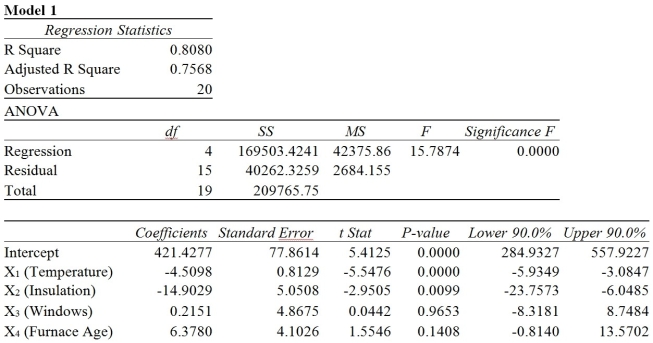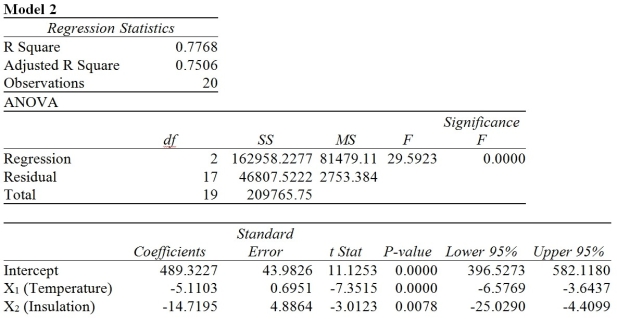TABLE 13-6
One of the most common questions of prospective house buyers pertains to the cost of heating in dollars (Y). To provide its customers with information on that matter, a large real estate firm used the following four variables to predict heating costs: the daily minimum outside temperature in degrees of Fahrenheit (X1), the amount of insulation in inches (X2), the number of windows in the house (X3), and the age of the furnace in years (X4). Given below are the Microsoft Excel outputs of two regression models.


-The coefficient of multiple determination, r², measures the proportion of variation in Y that is explained by X₁ and X₂.
Definitions:
Q1: What type of pay system rewards employees
Q7: Jason works at a call center for
Q40: Mia has Parkinson's disease but is on
Q43: Compensation represents both the intrinsic and extrinsic
Q64: In performing a regression analysis involving two
Q161: Referring to Table 13-8, the value of
Q182: Referring to Table 13-15, the alternative hypothesis
Q196: Referring to Table 10-20, the among-group variation
Q210: Referring to Table 13-17 Model 1, the
Q242: In a multiple regression model, the adjusted